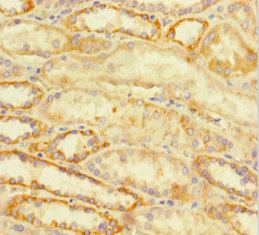ATRX antibody [GT4212]
GTX629703
ApplicationsImmunoFluorescence, Western Blot, ImmunoCytoChemistry
Product group Antibodies
TargetATRX
Overview
- SupplierGeneTex
- Product NameATRX antibody [GT4212]
- Delivery Days Customer9
- Application Supplier NoteWB: 1:500-1:3000. ICC/IF: 1:100-1:1000. *Optimal dilutions/concentrations should be determined by the researcher.Not tested in other applications.
- ApplicationsImmunoFluorescence, Western Blot, ImmunoCytoChemistry
- CertificationResearch Use Only
- ClonalityMonoclonal
- Clone IDGT4212
- Concentration1 mg/ml
- ConjugateUnconjugated
- Gene ID546
- Target nameATRX
- Target descriptionATRX chromatin remodeler
- Target synonymsalpha thalassemia/mental retardation syndrome X-linked (RAD54 homolog, S. cerevisiae); ATP-dependent helicase ATRX; JMS; MRX52; RAD54; RAD54L; transcriptional regulator ATRX; XH2; X-linked helicase II; X-linked nuclear protein; XNP; ZNF-HX
- HostMouse
- IsotypeIgG1
- Protein IDP46100
- Protein NameTranscriptional regulator ATRX
- Scientific DescriptionThe protein encoded by this gene contains an ATPase/helicase domain, and thus it belongs to the SWI/SNF family of chromatin remodeling proteins. The mutations of this gene are associated with an X-linked mental retardation (XLMR) syndrome most often accompanied by alpha-thalassemia (ATRX) syndrome. These mutations have been shown to cause diverse changes in the pattern of DNA methylation, which may provide a link between chromatin remodeling, DNA methylation, and gene expression in developmental processes. This protein is found to undergo cell cycle-dependent phosphorylation, which regulates its nuclear matrix and chromatin association, and suggests its involvement in the gene regulation at interphase and chromosomal segregation in mitosis. Multiple alternatively spliced transcript variants encoding distinct isoforms have been reported. [provided by RefSeq]
- Storage Instruction-20°C or -80°C,2°C to 8°C
- UNSPSC12352203
References
- ATRX represses alternative lengthening of telomeres. Napier CE et al., 2015 Jun 30, OncotargetRead more





![IHC-P analysis of human prostate tissue section using GTX02592 ATRX antibody [rATRX/3446].](https://www.genetex.com/upload/website/prouct_img/normal/GTX02592/GTX02592_20210319_IHC-P_w_23053122_951.webp)
![IHC-P analysis of human prostate carcinoma section using GTX02593 ATRX antibody [ATRX/2900R].](https://www.genetex.com/upload/website/prouct_img/normal/GTX02593/GTX02593_20210319_IHC-P_w_23053122_524.webp)
![IHC-P analysis of human pancreas tissue using GTX34418 ATRX antibody [39f].](https://www.genetex.com/upload/website/prouct_img/normal/GTX34418/GTX34418_20200115_IHC-P_841_w_23060801_991.webp)